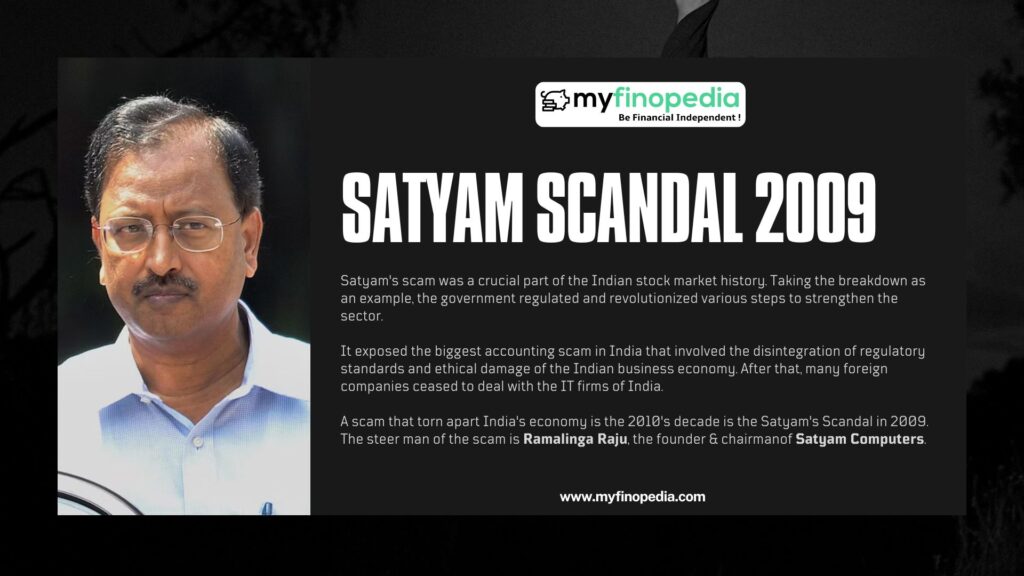A scam that torn apart India’s economy is the 2010’s decade is the Satyam’s Scandal in 2009. The steer man of the scam is Ramalinga Raju, the founder & chairmanof Satyam Computers. It also exposed the vulnerable condition of auditing, regulatory management & governance of IT sector in India.
For siphoning off a whopping amount of Rs. 7800 crores, it is often regarded as the biggest business scandal of India. Let’s delve more deeper into the different aspects of the scam.
What Happened in the Scam?
It exposed the biggest accounting scam in India that involved the disintegration of regulatory standards and ethical damage of the Indian business economy. After that, many foreign companies ceased to deal with the IT firms of India. The CEO of Satyam and other allies of the organization use to operate fraudulent transactions and forge banking statements to increase their earnings. As a result of such conduct, their cost price in the share market leaped to Rs. 544 from Rs. 10 overnight.
However, soon everything unfolded in a drastic form, leading to the whole share market breakdown. The illegal business of Raju and his employees sent all the stakeholders into an ultimate collapse. The scam was exposed by a surreptitious person, who sent emails to Krishna Palepu, the company’s director exposing the scam. Ultimately, it amounted to Raju’s arrest who confessed everything including his own involvement in the illegal activities without any aid.
Significance
After the scam was published, Raju initially tried to cover up and invest in a failing stock of $1.6 million. However, ultimately it was nothing but an inordinate venture. Ultimately, the World Bank for making any form of transactions in the foreign industries banned him. The Indian Government took some revolutionary steps towards creating a strengthening the regulatory framework of Indian IT firms stocks. For example, the Companies Act, 1956 reformed the corporate framework by obligating auditors, cost accountants, and secretaries to disclose any fraud. Also the SEBI adopted reasonable steps annihilating the suspected frauds influencing the market condition. Many of the financial experts hold Raju’s brother, former PwC auditors, and former chief financial officer Vadlamani Srinivasana responsible for the downturn of the company.
Conclusion
Overall, Satyam’s scam was a crucial part of the Indian stock market history. Taking the breakdown as an example, the government regulated and revolutionized various steps to strengthen the sector. Also, it dissolved the computerized scam by improvising T & C and other regulations for the wellbeing of the financial practices of India.






